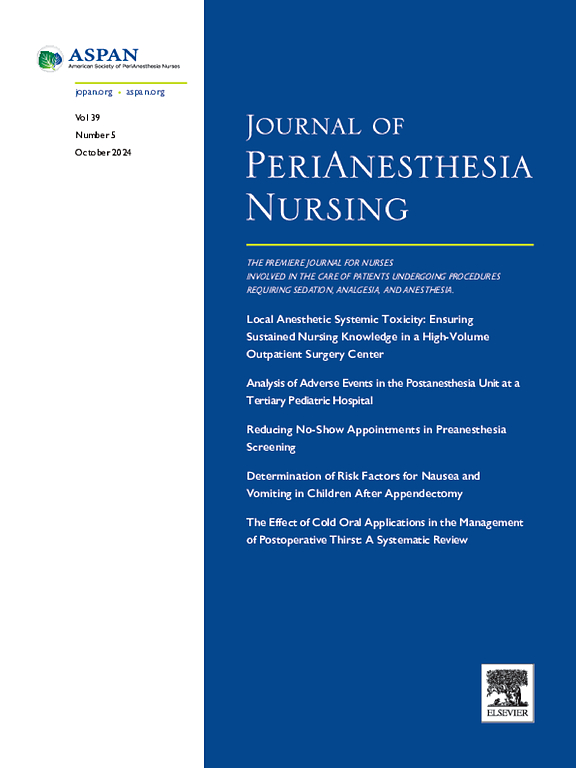Intrathecal Morphine for Postoperative Analgesia: Balance of Efficacy and Safety
IF 1.6
4区 医学
Q2 NURSING
引用次数: 0
Abstract
Intrathecal morphine (ITM) has been a reliable technique for postoperative pain management since 1979. As a key component of multimodal analgesia, ITM provides long-lasting pain relief. ITM’s simplicity, lack of need for expensive equipment, and minimal training requirements contribute to its wide use. In this article, we highlight the current state of affairs in terms of ITM for postoperative analgesia, including aspects that are still under debate. In particular, we emphasize the doses that are efficacious while minimizing the risk of respiratory depression. Further, we believe that when used in low doses (<200 mcg) and without the administration of potential augmenting medications, intrathecal morphine does not pose a greater risk of respiratory depression than systemic opioid therapies commonly used in routine clinical practice. We particularly emphasize that standard nursing care is sufficient for postanesthesia monitoring of patients in such cases.
鞘内吗啡用于术后镇痛:疗效与安全性的平衡。
自1979年以来,鞘内吗啡(ITM)一直是术后疼痛管理的可靠技术。作为多模式镇痛的关键组成部分,ITM提供持久的疼痛缓解。ITM的简单性、不需要昂贵的设备以及极少的培训需求,使其得到广泛使用。在这篇文章中,我们强调了ITM在术后镇痛方面的现状,包括仍在争论的方面。特别是,我们强调有效的剂量,同时尽量减少呼吸抑制的风险。此外,我们认为当低剂量使用时(
本文章由计算机程序翻译,如有差异,请以英文原文为准。
求助全文
约1分钟内获得全文
求助全文
来源期刊

Journal of Perianesthesia Nursing
NURSING-
CiteScore
2.20
自引率
17.60%
发文量
279
审稿时长
90 days
期刊介绍:
The Journal of PeriAnesthesia Nursing provides original, peer-reviewed research for a primary audience that includes nurses in perianesthesia settings, including ambulatory surgery, preadmission testing, postanesthesia care (Phases I and II), extended observation, and pain management. The Journal provides a forum for sharing professional knowledge and experience relating to management, ethics, legislation, research, and other aspects of perianesthesia nursing.
 求助内容:
求助内容: 应助结果提醒方式:
应助结果提醒方式:


